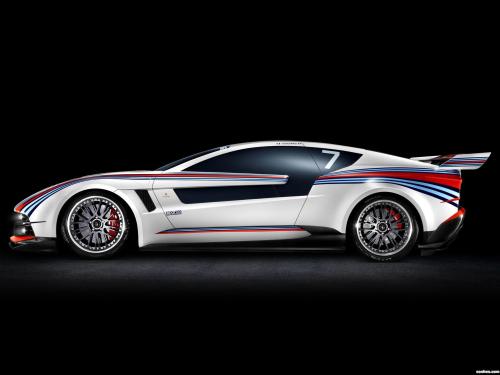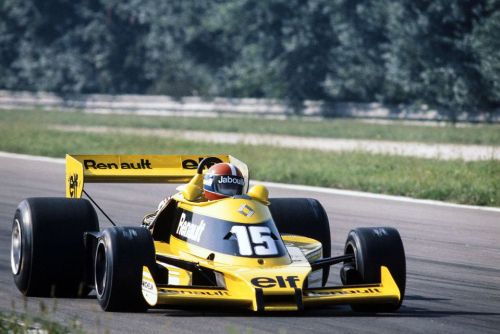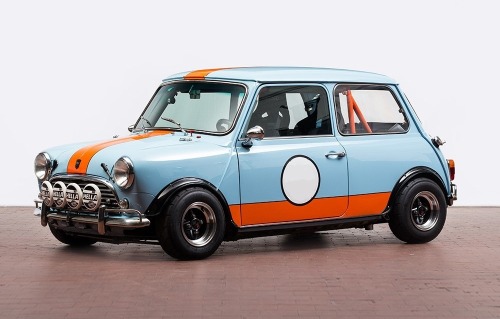Experience Tumblr like never before
Racecar - Blog Posts
Rockets, Racecars, and the Physics of Going Fast

When our Space Launch System (SLS) rocket launches the Artemis missions to the Moon, it can have a top speed of more than six miles per second. Rockets and racecars are designed with speed in mind to accomplish their missions—but there’s more to speed than just engines and fuel. Learn more about the physics of going fast:

Take a look under the hood, so to speak, of our SLS mega Moon rocket and you’ll find that each of its four RS-25 engines have high-pressure turbopumps that generate a combined 94,400 horsepower per engine. All that horsepower creates more than 2 million pounds of thrust to help launch our four Artemis astronauts inside the Orion spacecraft beyond Earth orbit and onward to the Moon. How does that horsepower compare to a racecar? World champion racecars can generate more than 1,000 horsepower as they speed around the track.

As these vehicles start their engines, a series of special machinery is moving and grooving inside those engines. Turbo engines in racecars work at up to 15,000 rotations per minute, aka rpm. The turbopumps on the RS-25 engines rotate at a staggering 37,000 rpm. SLS’s RS-25 engines will burn for approximately eight minutes, while racecar engines generally run for 1 ½-3 hours during a race.

To use that power effectively, both rockets and racecars are designed to slice through the air as efficiently as possible.
While rockets want to eliminate as much drag as possible, racecars carefully use the air they’re slicing through to keep them pinned to the track and speed around corners faster. This phenomenon is called downforce.

Steering these mighty machines is a delicate process that involves complex mechanics.
Most racecars use a rack-and-pinion system to convert the turn of a steering wheel to precisely point the front tires in the right direction. While SLS doesn’t have a steering wheel, its powerful engines and solid rocket boosters do have nozzles that gimbal, or move, to better direct the force of the thrust during launch and flight.

Racecar drivers and astronauts are laser focused, keeping their sights set on the destination. Pit crews and launch control teams both analyze data from numerous sensors and computers to guide them to the finish line. In the case of our mighty SLS rocket, its 212-foot-tall core stage has nearly 1,000 sensors to help fly, track, and guide the rocket on the right trajectory and at the right speed. That same data is relayed to launch teams on the ground in real time. Like SLS, world-champion racecars use hundreds of sensors to help drivers and teams manage the race and perform at peak levels.

Knowing how to best use, manage, and battle the physics of going fast, is critical in that final lap. You can learn more about rockets and racecars here.
Make sure to follow us on Tumblr for your regular dose of space!

Finished this pencil drawing of my favorite driver as a kid. It was fun and a great learning experience. Can’t wait to build more skill.

Work In Progress...Pencil and Marker- First Illustration of this type. While there are plenty of mistakes I’m pleased with the learning process in using pencils, markers and building a piece that isn’t line art.

Pics of Dale Jr. NASCAR made from cardstock paper...still has more work to do..engine, wheels, and interior...

Johnny Rutherford’s 1974 McLaren sketch with marker




2012 Italdesign Brivido concept

1988 Tyrrel with a very tiny Camel sponsorship on a elegant black livery

Jean-Pierre Jabouille (Renault RS01Turbo) Grand Prix d'Italie - Monza 1977. - source Carros e Pilotos.
Another racecar with Gulf livery!

Leo Kinnunen, the first Finnish F1 driver dies at the age of 73. Kinnunen raced most of his career driving Porsche’s cars. One of his most memorable victories was 1969 Targa Florio with Porsche 908/3. Kinnunen set a laptime of 33'36min, which is still the fastest time ever recorded in Targa Florio via /r/Autos







Photo: ziri_mods
Ferrari 288 GTO










Photo: kevinvanc












